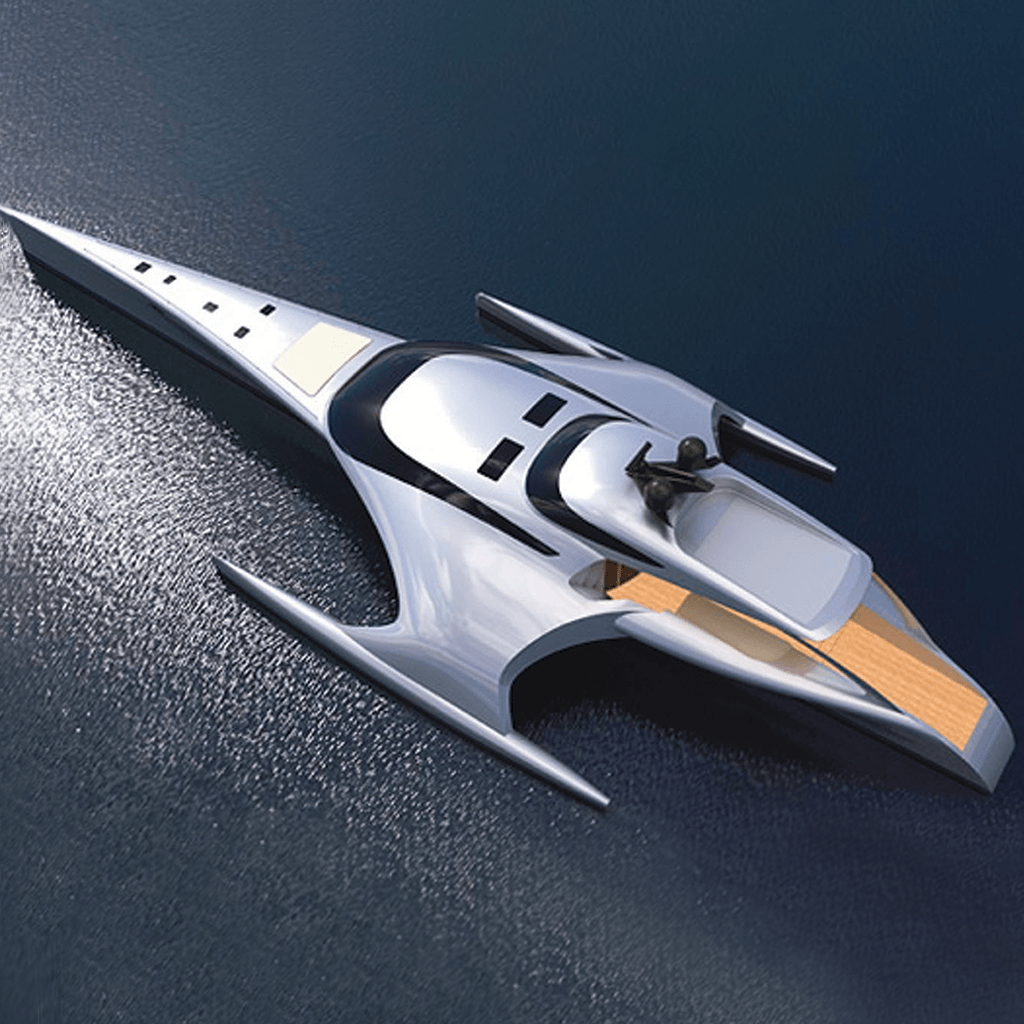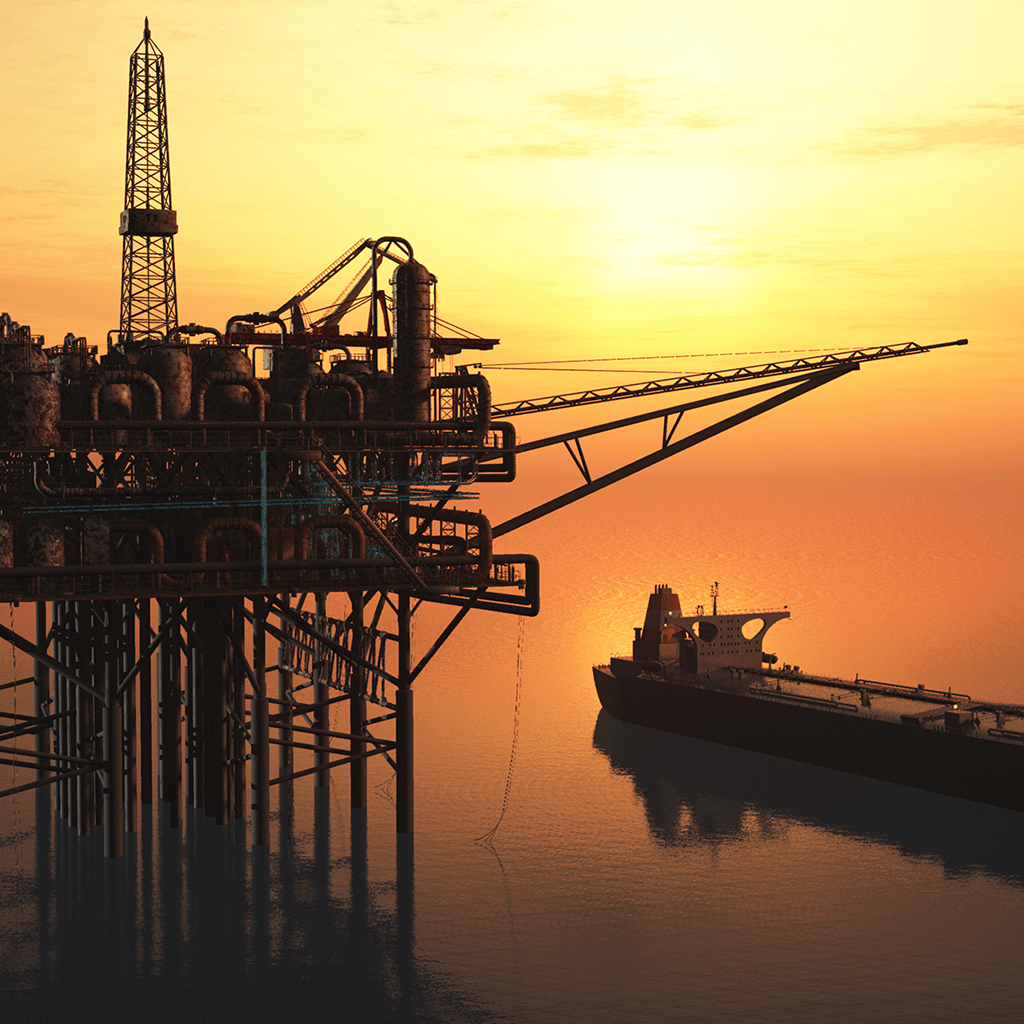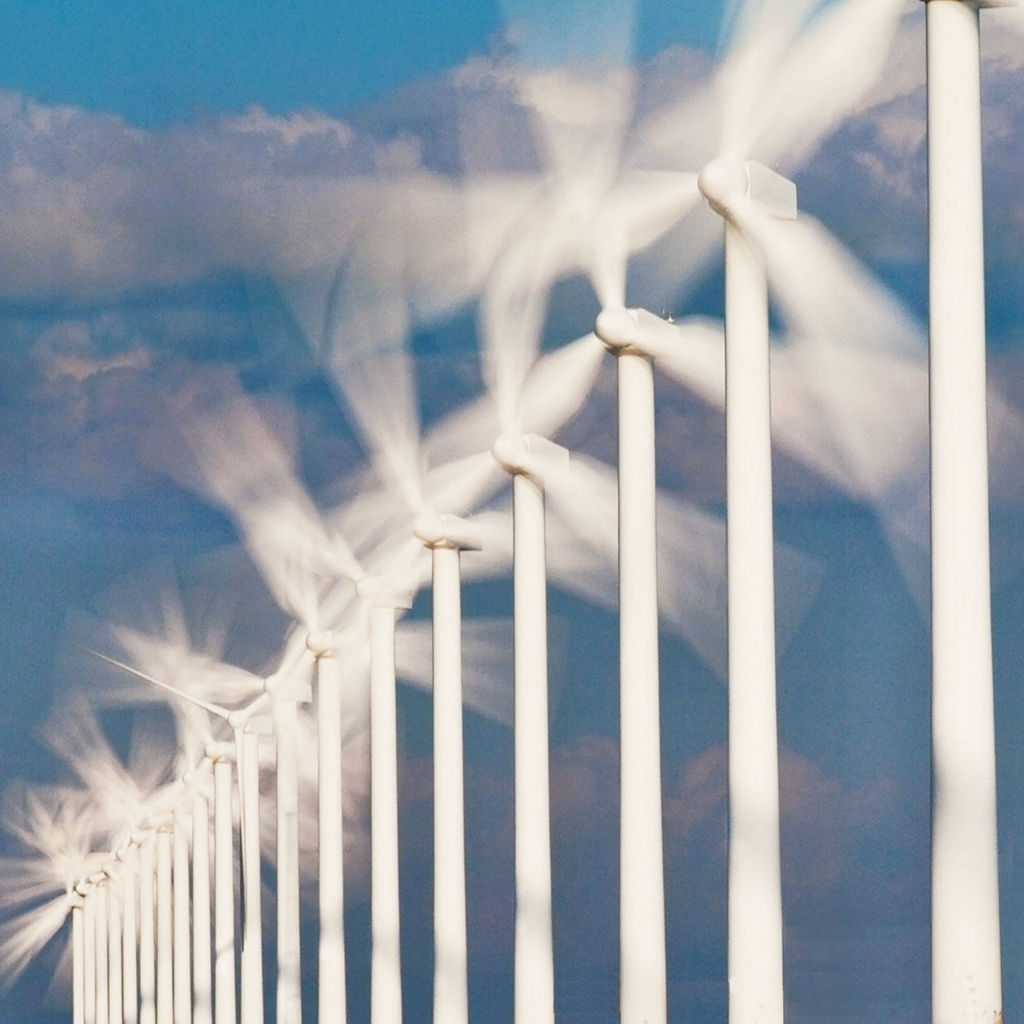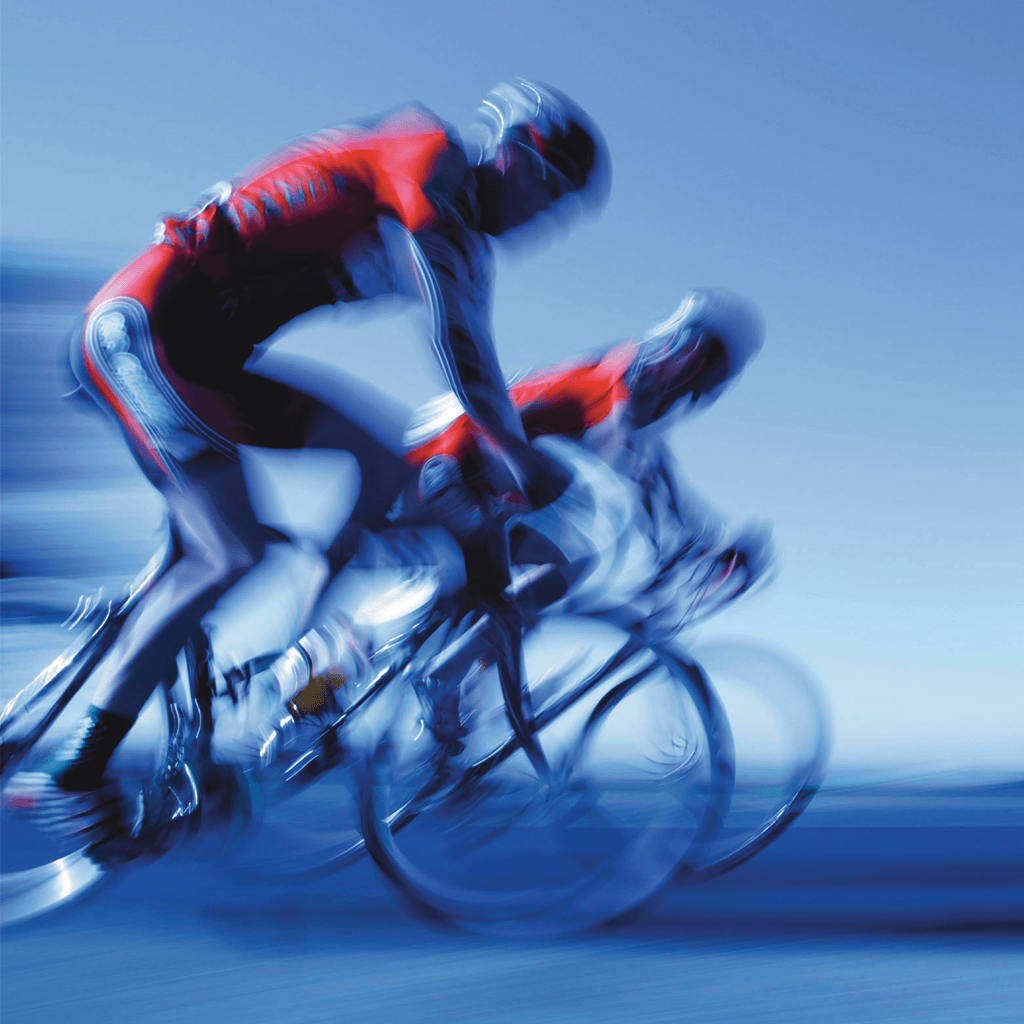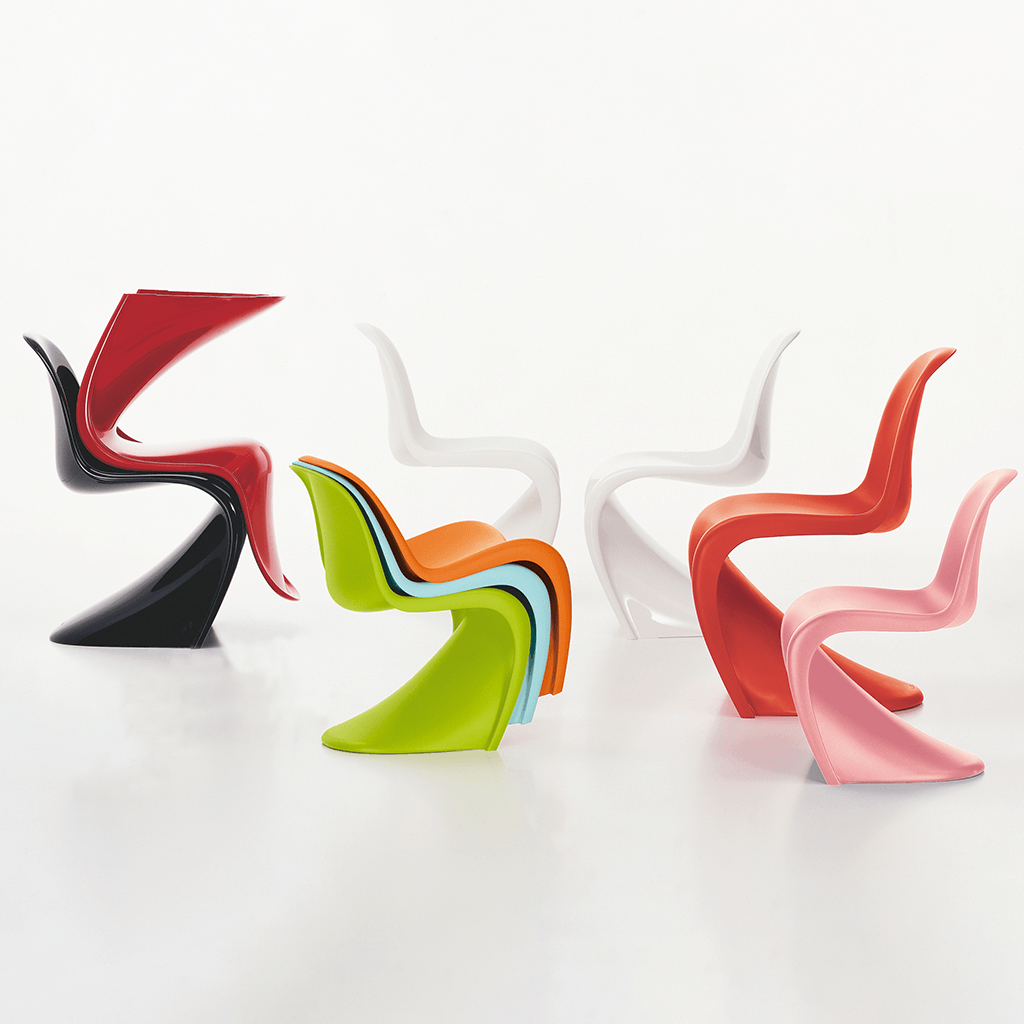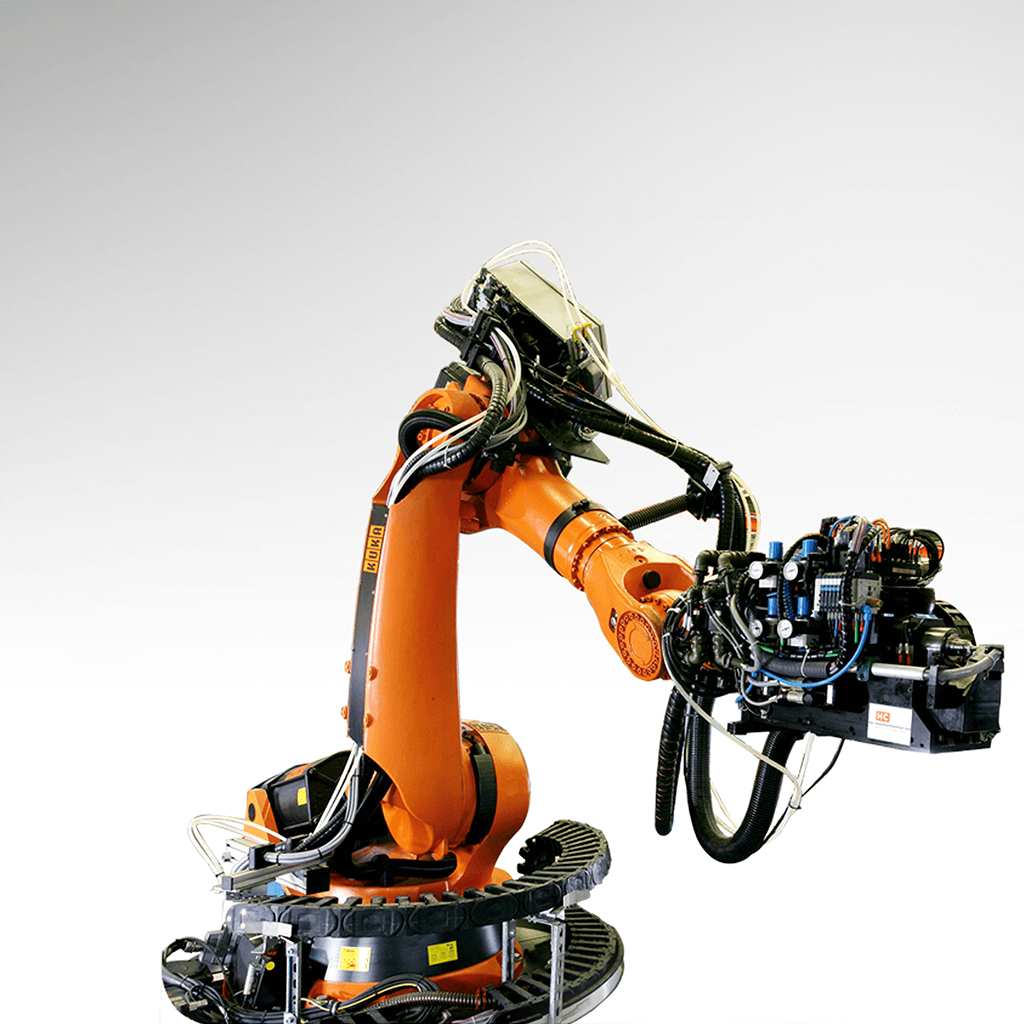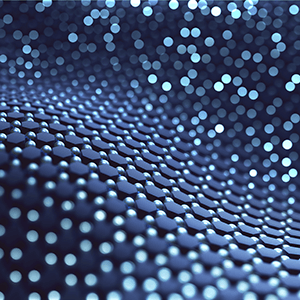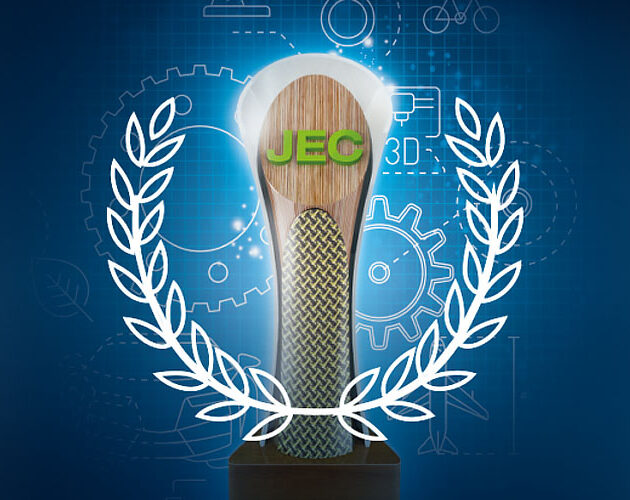JEC Composites Innovation Awards 2024: the finalists line-up revealed
Annually, the JEC Composites Innovation Awards recognize successful initiatives and collaborative efforts within the composites industry. Over the past 26 years, the program has engaged over 2,000 companies globally, honoring 225 companies and 573 partners for their outstanding achievements in composites innovation and effective partnerships. Criteria for the awards include partner involvement in the value chain, project complexity, and commercial potential.

The competition is open to any company, university or R&D Center with a compelling collaborative innovation or concept to showcase. The success of participants is closely tied to partnerships and collective intelligence. Beyond being a ceremony, these awards serve as a platform to spotlight potentially undisclosed projects, offering inspiration and motivation to an expert audience eager to explore new frontiers.
After pre-selection of the 33 finalists, one winner will be selected in each of the 11 categories. The awards ceremony will take place in Paris on February 8th, 2024.
Discover below the finalists in each category.

Category Aerospace – Parts
BioGear
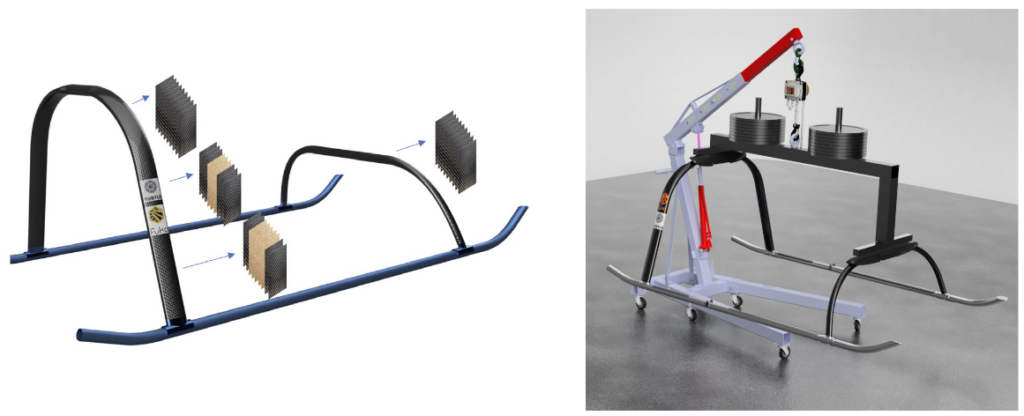
Company: Fuko srl (Italy)
Partner: Turtle srl (Italy)
Description: BioGear is a helicopter landing gear blending carbon- and flax-fibre-reinforced composites, achieving a 60% weight reduction over traditional metal counterparts. BioGear not only enhances the emergency landing response but also prioritizes both efficiency and environmental impact. BioGear combines recycled carbon fibre and flax-based composites, weighing only 6.9kg (40% of the original). Meeting CS.27 specifications and exceeding emergency landing requirements (CS 27.727), it outperforms traditional metallic counterparts. Prioritizing sustainability, recycled carbon fibres reduce environmental impact, transitioning to a cradle-to-cradle approach. Flax fibres offer advantages of low environmental impact, density reduction, and vibration dampening. BioGear aims for lightweight design, enhanced energy absorption, and minimal drag resistance through meticulously studied airfoil cross-sections using CFD simulations yet keeping an eye on manufacturing through autoclave moulding.
Key benefits:
• The landing skid weight has been reduced by 60%
• Massive CO2 Reduction in the the craddle-to-grave analysis
• Minimized drag resistance thanks to an airfoil shape optimization
• The optimized design allows using recycled carbon fibres with no safety issues
• The Intercalation of flax fibres in the composite allows reducing vibrations
More information: www.fuko.srl
CFRP lattice satellite central tube

Company: ATG Europe (Netherlands)
Partner: ÉireComposites Teo (Ireland)
Description: ATG Europe has developed a one-shot manufacturing process for uninterrupted prepreg fibre-placed lattice structures that aim to replace current satellite central tube designs. These cylindrical lattice structures offer optimal structural functionality at a reduced mass. This innovation included the design, development and manufacture of a fully representative CFRP lattice central tube based on requirements for ESA’s PLATO satellite, including all necessary interface zones. Thermoset pre-preg carbon fibre tows and patches were manually laid-up onto a mandrel, consolidated and cured in an autoclave in a single step to form one integral part. The primary interface to the launcher structure was provided by a one-piece aluminium interface ring, which was assembled to the lattice cylinder through a hybrid joint.
Key benefits:
• One-shot manufacturing process
• Structural efficiency and significant mass savings
• Uninterrupted pre-preg fibres leading to optimised structural performance
• High specific stiffness
• Reduced manufacturing time and cost
More information: www.atg-europe.com
Thermoplastic composite ebay floor

Company: Sogeclair Equipment (France)
Partner: Airbus Atlantic (France)
Description: Sogeclair Equipment, formerly known as Aviacomp presents an aeronautic door featuring a complex stamping shape and advanced welding in thermoplastic composite. With integrated overmolded parts and an optimized design, the solution significantly reduces weight and assembly time using composite materials and induction welding.
Material used: Thermoplastic PPS and carbon fibres fabric through injection moulding, using a single material to facilitate recycling.
Process used: Thermostamping for shapping, waterjet cutting, induction welding for function integration and assembly, overmolding.
Key benefits:
• Reduction of environmental impact
• Weight Saving (40%)
• Cost Saving (20%)
• Time-saving for manufacturing
• No fixation thanks to induction welding (time assembly)
More information: www.sogeclair.com
Category Aerospace – Process
ASPERA welded thermoplastic composite demonstrator

Company: Spirit AeroSystems (USA)
Partners: A&P Technology (USA), Concordia Fibers (USA), Electroimpact (USA), Mitsubishi Chemical Advanced Materials (USA), NIAR (USA), Victrex (USA)
Description: In preparation for future aerospace challenges Spirit AeroSystems fabricated details utilizing automated fibre placement, stamp forming, and novel pressure intensification processes that were welded with the patented Co-Fusion and induction to demonstrate fastener-free high-rate manufacturing. ASPERA article is representative of a large portion of a typical commercial aircraft cabin but is made of entirely thermoplastic composite details welded together. The article exhibits fastener-free assembly methods to minimize weight and cost while utilizing rapid fabrication processes that enable future high-rate single-aisle commercial aircraft production. Both patented and proprietary novel fabrication and welding processes are used to make the part. These processes were developed internally by Spirit AeroSystems and represent state-of-the-art thermoplastic composite technologies and tooling methodologies.
Key benefits:
• Rapid fabrication process cycle time with dramatic reduction in energy consumption.
• Elimination of fasteners and associated scrap, rework and weight.
• Utilized materials that can be reworked in process and recycled at end of life.
• Efficiently combined welding and consolidation cycles with patented process.
• Developed rapid in-situ induction welding process with minimal unused heat energy.
More information: www.spiritaero.com
EmpowerAX – Additive functionalisation
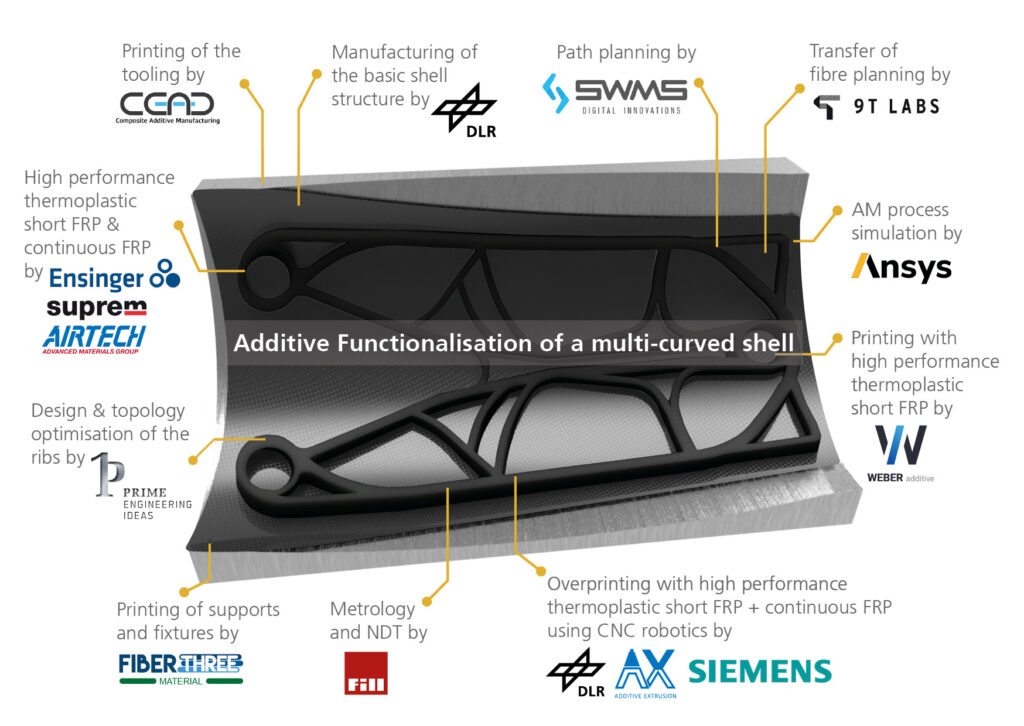
Company: German Aerospace Center (Germany)
Partners: 9T Labs AG (Switzerland), Airtech Europe (Luxembourg), Ansys Switzerland GmbH (Switzerland), CEAD B.V. (Netherlands), Ensinger GmbH (Germany), Fiberthree GmbH (Germany), FILL Gesellschaft m.b.H. (Austria), Hans Weber Maschinenfabrik GmbH / WEBER additive (Germany), PRIME aerostructures GmbH (Austria), Siemens AG (Germany), Suprem SA (Switzerland), SWMS Systemtechnik Ingenieurgesellschaft mbH (Germany)
Description: The EmpowerAX Demo Part is a multi-curved thermoset shell additively functionalised with short and continuous fibre- reinforced elements realised by DLR and 12 EmpowerAX members. It demonstrates the industrially available process chain for Additive Functionalisation. The EmpowerAX Demo Part showcases the concept of Additive Functionalisation and its industrially available process chain. It is a collaborative project within DLR Innovation Lab EmpowerAX where DLR and twelve industrial players – from design and simulation experts over CAD-CAM specialists to printing and material suppliers – joined forces to demonstrate the capability of overprinting a multi-curved thermoset shell with high-performance, short- and continuous fibre-reinforced thermoplastic material. Cost-efficient composite manufacturing is combined with the high agility and design freedom of additive manufacturing.
Key benefits:
• Cost-efficient composite manufacturing
• Overprinting of a multi-curved shell
• Combining thermosetting and thermoplastic polymers
• Short & continuous fibre-reinforced materials
• Industrially available process chain
More information: www.dlr.de
One-shot in situ consolidation wing upper cover

Company: Airbus DS – Defence & Space (Spain)
Partner: FIDAMC (Spain)
Description: Transport aircraft external wing skin cover, part of a primary structure, through ecofriendly process: one step in situ consolidation of PEEK thermoplastic resin-based carbon fibre, enabling Low energy consumption processing and end of life recycling. Thermoplastic resin-based-composites are a key enabler towards sustainability of composite structures in aerospace due to its recyclability and performance. Airbus Defence and Space (Engineering) and FIDAMC (Manufacturing) have produced a thermoplastic In-situ-consolidated (ISC) Upper Cover for AIRFRAME ITD CleanSky2 platform, for its integration into an Outer external wing box specimen, being the first demonstrator of a primary structure by ISC with integrated stringers and without any post-consolidation step. An exhaustive testing campaign substantiates TRL5: mechanical characterization, detail, subcomponent level and full scale up to Ultimate Load.
Key benefits
• Weight performance through structural integration in one-shot consolidation
• Improved recyclability
• Automation
• Ecoefficient Processing
• Promising new repairs techno by welding
More information: www.airbus.com
Category Automotive & Road Transportation –Parts
Monolithic CFRP-aluminum monocoque: A novel approach for carbon neutrality

Company: Toyota Motor Corporation (Japan)
Partners: Toyota Central R&D Labs., Inc (Japan), Toyota Customizing & Development Co., Ltd. (Japan), TISM Co., Ltd. (Japan)
Description: A full-scale variable axial CFRP-aluminum semi-monocoque was designed, fabricated, and evaluated. It showed a 15% weight reduction with minimal fibre waste (4%) and assembly cost. This technology aims to improve carbon neutrality through the effective use of carbon fibre reinforced polymers (CFRPs). The technology creates 3D monolithic CFRP-aluminum structures by integrating anisotropic topology optimization, Turing pattern fibre path generation, tailored fibre placement and nano uneven anodization bonding, to optimize fibre function and material utilization. A semi-monocoque prototype demonstrates the potential for weight reduction in large 3D structures with complex topology using large fibre tow (50K) placed on 5 km of design paths with only 4% fibre waste.
Key benefits:
• Full-lifecycle carbon neutrality
• Weight reduction
• Minimized fibre waste and assembly cost
• Optimized material usage
• Advanced manufacturing process
More information: www.tytlabs.co.jp
Ultra-light CF thermoplastic composite door

Company: Center for Composite Materials – University of Delaware (USA)
Partners: Clemson University (USA), Envalior (Germany), Honda Development & Manufacturing of America, LLC (USA)
Description: We have engineered the world’s first ultra-lightweight carbon fibre reinforced thermoplastic composite vehicle door, 45% lighter than steel meeting static, dynamic, crash performance metrics, 100 % reprocessable, signifying a major advance in sustainable automotive design. Our groundbreaking innovation features the world’s first carbon fibre reinforced thermoplastic composite door for vehicles, using reprocessable Nylon-based carbon fibre laminates which enable easy integration with existing sheet metal forming equipment. Our approach includes systems engineering, leveraging Finite Element Analysis for structural optimization, reducing part count by 52 % relevant to baseline doors. We developed a novel manufacturing-to-response pathway, incorporating extensive material testing, simulations, to predict and optimize thermoforming effects. This innovation resulted in a lightweight, durable, and cost-competitive door, advancing sustainable automotive manufacturing.
Key benefits
• Reduction in vehicle emissions
• Improved fuel efficiency
• Reduction in vehicle emissions
• 100% reprocessability
• Enhanced crash performance
More information: www.ccm.udel.edu
1st certified large 350l type IV H2 700 bar tank
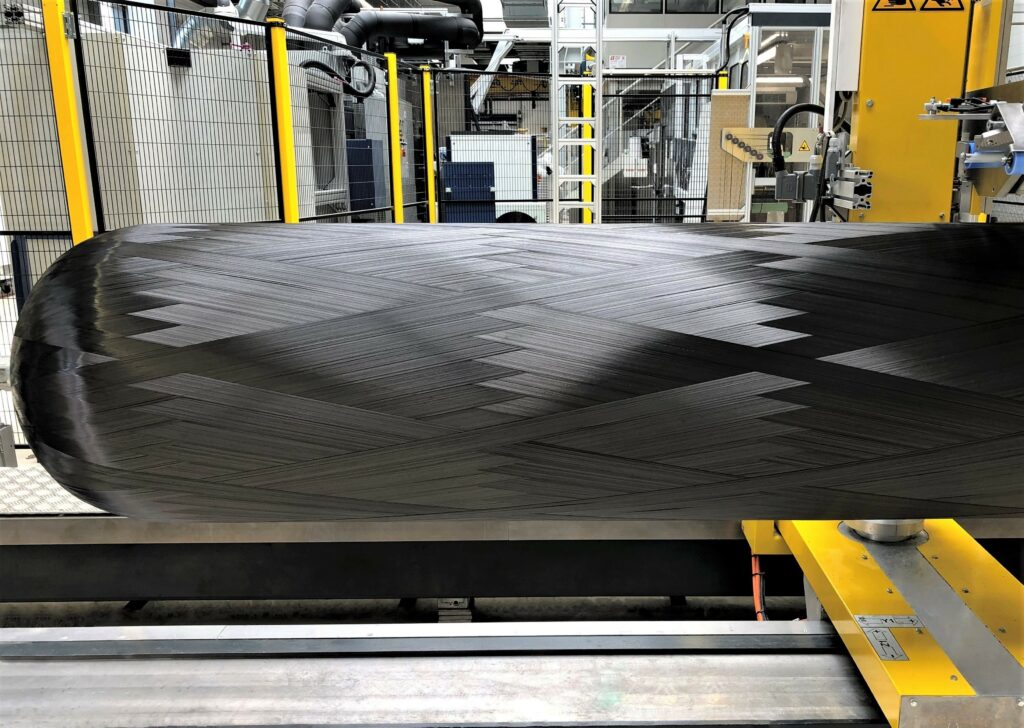
Company: Voith Composites SE & Co. KG (Germany)
Partners: Huntsman Advanced Materials GmbH (Switzerland), Toray Carbon Fibers Europe S. A. (France)
Description: The 700 bar, 350 litre hydrogen tank – Carbon4Tank – is the 1st certified Type IV tank in its class. It’s for heavy transport and commercial vehicles and ensures maximum performance and minimum TCO. “Carbon4Tank” is the first UNECE R 134 approved 700 bar and 350 liters type IV hydrogen tank. The vessel is produced by an optimized TowPreg winding process. The resin is special formulated to allow precise placement of fibres. Together with high strength carbon fibres, we get a high-performance TowPreg. The optimum of material, winding layers, and fully automated production, guarantee highest safety and automotive quality standards. “Carbon4Tank” is ready for serial production and ensures high cost-performance ratio and decarbonization of transportation.
Key benefits
• Technical maturity for H2-on-road operation
• Certified according to UN/ECE R134
• Highest weight and cost efficiency
• Highest precision and safety
• Maximized hydrogen storage capacity
More information: www.voith.com
Category Automotive & Road Transportation – Process
Cost-effective automotive body structures

Company: Weav3D (USA)
Partners: Altair Engineering (USA), Braskem America (USA), Clemson University (USA)
Description: WEAV3D’s composite lattice reinforcement enables lighter and less expensive thermoplastic solutions than conventional organosheet, unlocking new opportunities for cost-effective replacement of sheet metal structures with thermoplastics, as demonstrated through this innovative beltline stiffener door component. WEAV3D’s patented continuous composite forming process enables variable tape spacing, converting glass- and carbon-fibre reinforced polypropylene unidirectional tapes (UDMAX and TAFNEX, respectively) into an optimized, woven, consolidated lattice. This maximizes performance in critical load regions while minimizing expensive trim waste. The innovative door component was manufactured by laminating WEAV3D’s lattices to Braskem’s extruded polypropylene sheet, grade TI4003F, using a continuous double belt press, then thermocompression molding the sheet in a matched-metal tool at the Clemson Composite Center, followed by final part trim via 5-axis waterjet.
Key benefits:
• 50% cost savings vs. CFPA6 organosheet
• 23% weight savings vs. CFPA6 organosheet
• 62% reduction in trim scrap by weight
• Improved energy absorption and shape recovery compared to steel
• High rate, highly automated forming cycle
More information: www.weav3d.com
Automated preforming process for complex CFRP part

Company: Teijin Automotive Technologies (France)
Partners: Dr. Ing. h.c. F. Porsche AG (Porsche) (Germany), Airborne (Netherlands), Pinette PEI (France)
Description: Development of a fully automated process for supplying complex preforms designed to achieve crash performance requirements while reducing the amount of carbon fibre used. Integrated sensors and vision systems provide high accuracy. Our process starts with highly precise cutting of patches and optimized nesting which is automatically adapted if a defect is detected. The robot stacks the plies and spot-welding stabilizes the 2D preforms. Each ply is scanned to ensure accurate placement, within 0.5 mm tolerance. The stacking is then heat-activated and consolidated prior to forming. Our proprietary 3D concept manages the proper holding of the various layers during the molding phase to ensure the final accuracy of the geometry and required thicknesses.
Key benefits:
• Assembly of several free-form patches in 2D that are then 3D-formed in one step.
• Very accurate positioning of each layer using high-resolution vision systems.
• Fast, fully automated process ensures repeatability and optimum quality.
• The system is digitally controlled, all plies are scanned to ensure quality.
• Our unique process is highly flexible and compatible with all types of fibres.
More information: www.teijinautomotive.com
Reactive PA6 pultrusion: Boost for TP composites

Company: Röchling Automotive SE (Germany)
Partners: Fraunhofer Institute for Chemical Technology ICT (Germany), Röchling Industrial SE & Co. KG – Haren (Germany)
Description: Reactive thermoplastic pultrusion enables the production of cost-effective and highly resilient automotive components. The profiles are integrated in the final part by injection or compression molding. The PA6-based composites allows simple recycling in without dismantling. The innovation is the use of in-situ pultruded PA6GF profiles for cost-efficient composite parts in the automotive industry. The combination of a highly efficient production for the reinforcement elements by using continuous pultrusion with state-of-the-art injection molding allows a production at low cycle time and costs. The achievable fibre content of the pultruded profiles is higher than for alternative reinforcements and due to the same plastic material for injection molding and the pultruded profiles, the whole part can be recycled without any dismantling operations.
Key benefits:
• Cheap processes and raw materials
• Sustainable – Just a single polymer
• Strong by design and reinforcements
• Light due to material savings
• Flexible use in diverse applications
More information: www.roechling.com/automotive
Category Building & Civil Engineering
Novel, sustainable façade enables BREEAM rating

Company: Armacell Benelux S.C.S. (Belgium)
Partners: Holland Composites (Netherlands), Solico Engineering (Netherlands)
Description: The innovative, sustainable composite building façade for The Pulse of Amsterdam, created thanks to the cooperation of Armacell (providing ArmaPET® Struct core foams), Holland Composites (manufacturing Duplicor® façade modules), and Solico Engineering (responsible for engineering). The 14,000 m2 Duplicor® façade, successfully installed in the Pulse of Amsterdam building, incorporates approximately 1,100 composite elements. Solico engineers analysed multiple versions of the picture frame-style composite modules that cantilever progressively further outward towards the building top. During the development cycle of the new material solution, Holland Composites used Armacell’s ArmaPET® Struct and Eco core foams to manufacture biobased Duplicor® composites. After several iterations, the target of combined lightweight, mechanical performance, fire resistance, sustainability, minimal maintenance, and cost-effectiveness was successfully achieved.
Key benefits
• Game-changing sustainability gain for lightweight composite building elements
• Cost-effective solution to complex environmental, structural & fire specs
• BREEAM Outstanding rating confirming sustainable design of the building
• Low maintenance solution that minimizes the total cost of ownership
• Easy and time-saving installation due to lightweight properties
More information: www.armacell.com
RENCO MCFR (Mineral Composite Fibre Reinforced)

Company: RENCO USA (USA)
Partners: Arquitectonica (USA), Catalyst Communications (USA), Coastal Construction (USA), DeSimone Consulting Engineers (USA), DeVit Consulting. Inc. (USA)
Description: RENCO MCFR is a state-of-the-art structural building system comprised of interlocking composite building units of various types and sizes of blocks, columns, beams, joists, headers, decking, connectors, etc. These products are all adhesively joined (chemically bonded) to form monolithic structures. RENCO products are manufactured with naturally occurring raw materials and newly composed materials from recycled products in an environmentally friendly manufacturing process. Yet it is economical, easy to work with, fast to construct, has superior strength and requires no maintenance after construction, EVER! The American Society for Testing and Materials (ASTM) has verified and listed our Environmental Product Declarations (EPD).
Key benefits
• Less costly than a comparable wood, concrete, or steel structure.
• Stronger-passed ASTM and TAS Standards; able to withstand Cat 5 hurricane winds.
• Faster – No shoring, formwork, bracing or waiting for related inspectors
• Lighter – Similar in weight to a wood structure and 1/4 the weight of concrete.
• Fire, water, and pest resistant. Easy to build with.
More information: www.RENCO-usa.com
Robotically fabricated composite façade elements

Company: FibR GmbH (Germany)
Partners: Covestro AG (Germany), Kümpers GmbH (Germany)
Description: Lightweight façade elements manufactured using a highly resource-efficient robotic filament winding process. Designed for high mechanical loads and optimized for specific degrees of shading with concurrent weather, UV and fire resistance. The composite façade elements are fabricated in a robotic filament winding process using glass and carbon fibre towpregs. In our coreless filament winding process, the component geometry is obtained by the interaction of the fibres in the free space between the winding pins. By varying the winding sequence, many different geometries are realized with the same winding frame. Parametric design tools are used to design both the components and the robot movements. This enables efficient design iterations while the machine codes are automatically updated.
Key benefits:
• High-performance lightweight building components
• UV- and weather resistance as well as fire protection class B1
• Parametric design and machine code generation for cost-efficient production
• Highly resource-efficient additive manufacturing in automated robotic process
• Novel design repertoire due to parametric design and coreless filament winding
More information: www.fibr.tech
Category Circularity & Recycling
Building a closed-loop ecosystem for carbon fibre

Company: FAIRMAT (France)
Partner: Hexcel Corporation (France)
Description: Fairmat’s AI-driven and robotic technology creates 100% recycled CFRP Chips. Versatile for diverse product applications, these innovative chips offer strength, stiffness, and lightweight benefits, filling the gap in the advanced materials industry. Fairmat’s software-centric approach drives scalable, decarbonized manufacturing, closing the carbon fibre loop. Our skilled AI, data science experts, and cloud infrastructure design the proprietary technology which fuels our manufacturing solutions. Powered by AI and robotics, Fairmat’s CFRP chips, made from 100% recycled materials, provide tailored properties, enhancing performance while reducing environmental impact. Validated through more than 1,000 R&D tests, this innovation sets new standards for sustainable materials, applicable across sports, electronics, and mobility consumer product industries.
Key benefits:
• Keeps valuable carbon fibre materials from going to waste
• Gives consumer brands the ability to develop sustainable and high quality products
• Goes from global to local production using advanced industrial solutions
• Works closely with customers & suppliers to close the loop on carbon fibre waste
• A commitment to transparent communication about the future of waste
More information: www.fairmat.tech
Circular structures: Composites as a service

Company: GREENBOATS GmbH (Germany)
Partners: Depestele SAS (France), Hochschule Bremen (Germany), Next Horizon Mobility GmbH (Germany)
Description: GREENBOATS GmbH reduces the environmental footprint and maximizes component usage over their lifespan, multiplying eco-friendly benefits. Our approach combines sustainability with efficiency, delivering durable, high-performance composites. At GREENBOATS GmbH, our composite material innovation seamlessly integrates sustainability with advanced processing technology. Our focus is on using natural fibres as reinforcements, coupled with plant-based resin systems, and incorporating either natural or recycled core materials. This combination enables us to construct high-performance, lightweight composites. By prioritizing these eco-friendly materials, we effectively reduce the CO2 footprint of our products. Our unique approach, which includes overcoming the processing challenges of natural fibres, ensures we produce environmentally responsible composites without compromising on quality or performance.
Key benefits:
• Sustainability: Eco-friendly materials reducing environmental impact.
• Cost-Effectiveness: Affordable, reducing upfront client costs.
• Enhanced Performance: Strong, durable, and lightweight materials.
• Circular Economy: Promotes material reuse and recycling.
• Market Adaptability: Flexible leasing for diverse industry needs.
More information: www.green-boats.de
Emphasizing to enhance material property by sizing

Company: B&M Longworth (Edgworth) Ltd (UK)
Partners: Autotech Engineering (Gestamp) (UK), B&M Longworth (Edgworth) Ltd (UK), Brunel University London (UK), EMS-Grivory (UK), Ford Motor Company (UK), Gen2Plank Ltd (UK), TWI Ltd (UK)
Description: The creation of ‘glassene’ a brand new, advanced material with price-point close to glass and performance to rival some carbon fibre, with impressively low LCA. Promotes structural reuse of composites on a mass scale. EMPHASIZING aims to create a new advanced material with price close to glass fibre, performance to rival some carbon fibre and impressive LCA. GRP from a range of sources (wind, marine, fibre production) reclaimed as 100% clean glass by DEECOM® pressolysis. The fibres are chopped into 6mm lengths before a range of sizing chemistries are considered, assessed, and tested; then compounded with polyamide thermoset and injection moulded; creating a mass production, structural component, tested against the steel counterpart and with a characterisation data card.
Key benefits:
• Global GRP waste solution
• Enables wind/marine/glass fibre industries to have ‘zero waste from composites’
• Creates a new, green, low cost advanced material to directly displace virgin
• Recyclate can go back into industries looking to decarbonise = circularity
• Addresses the current advanced materials imbalance of demand vs supply
More information: www.bmlongworth.com
Category Digital, AI & Data
AI solutions improve sustainability & reduce waste
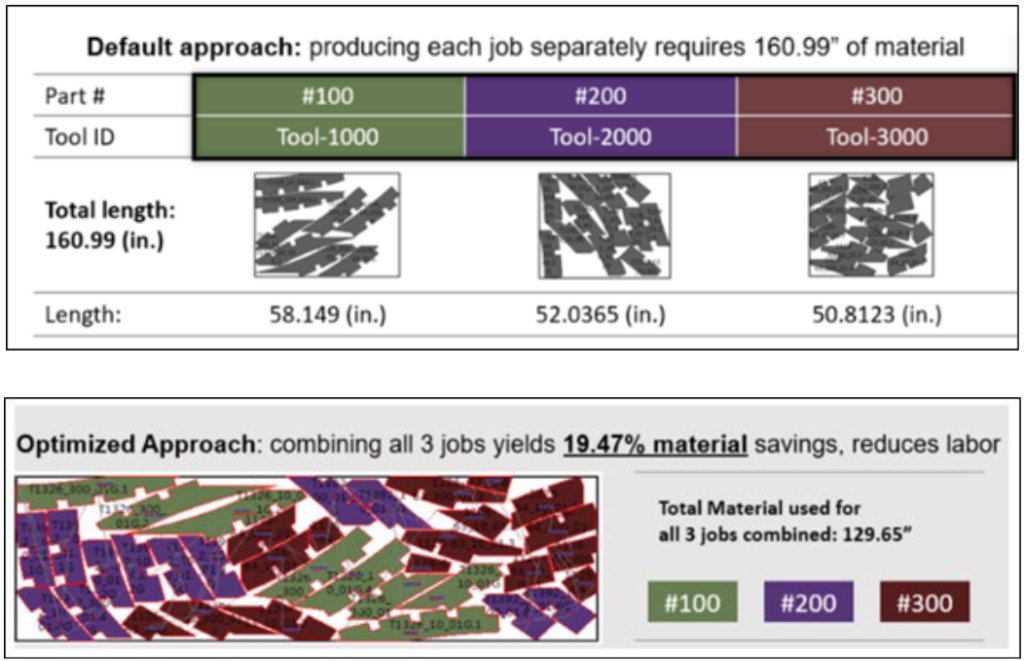
Company: Plataine (Israel)
Partner: MRAS, ST Engineering company (USA)
Description: Plataine’s AI and IIoT based solutions drive factories to reduce composite materials waste and achieve higher sustainability and efficiency goals. Digital Assistants automatically track and optimize production planning to meet increased production rates. AI and IIoT solutions digitize the production process, eliminate paperwork & human errors and are a crucial part of the path to net zero:
1) Reduce: Optimizing cutting plans by considering all orders in real-time, mixing different work orders into the same cut plans for maximum efficiency.
2) Reuse: Reusing composite remnants and short rolls that would otherwise go to waste with a combination of AI technology and RFID.
3) Recycle: Digital Thread provides documentation of every step of production, and improved insights into the production process.
Key benefits:
• Optimized and effective cut plans, maximized usage of raw materials by 20%
• 10% overall improvement in material usage efficiency
• 96% first-time-right yield for composite Nacelle structures
• 100% real-time visibility over the factory
• Automated processes lead to a paperless production and improved on-delivery rate
More information: www.plataine.com
Mobile energy analysis for sustainable production

Company: CTC GmbH (Germany)
Partner: Airbus Aerostructures (Germany)
Description: A holistic energy flow analysis was developed for data-driven improvement of current and future composite production. It has proven to be a multiplier for sustainable composite products, reducing energy needs and creating cost savings. Our approach has led to massive energy reductions in existing CFRP production and reduced energy needs for the future aircraft due to efficient future technologies for lightweight components. Based on the developed measurement device, which integrates any sensor, it is a multiplier for sustainability improvements and innovations. Three analyses have been developed: Consumption Measurements to calculate saving potentials. Life Cycle Assessment Data Generation to accurately model a LCA. Deep Energy Analysis which couples energy and process data for a holistic understanding to identify optimization potentials.
Key benefits:
• Understanding of composite technology energies
• Energy optimization of current production systems
• Develop energy-efficient composite technologies
• Real energy data for LCA
• Mobile measurement for industrial systems
More information: www.ctc-composites.com
Wind turbine blade executable digital twin
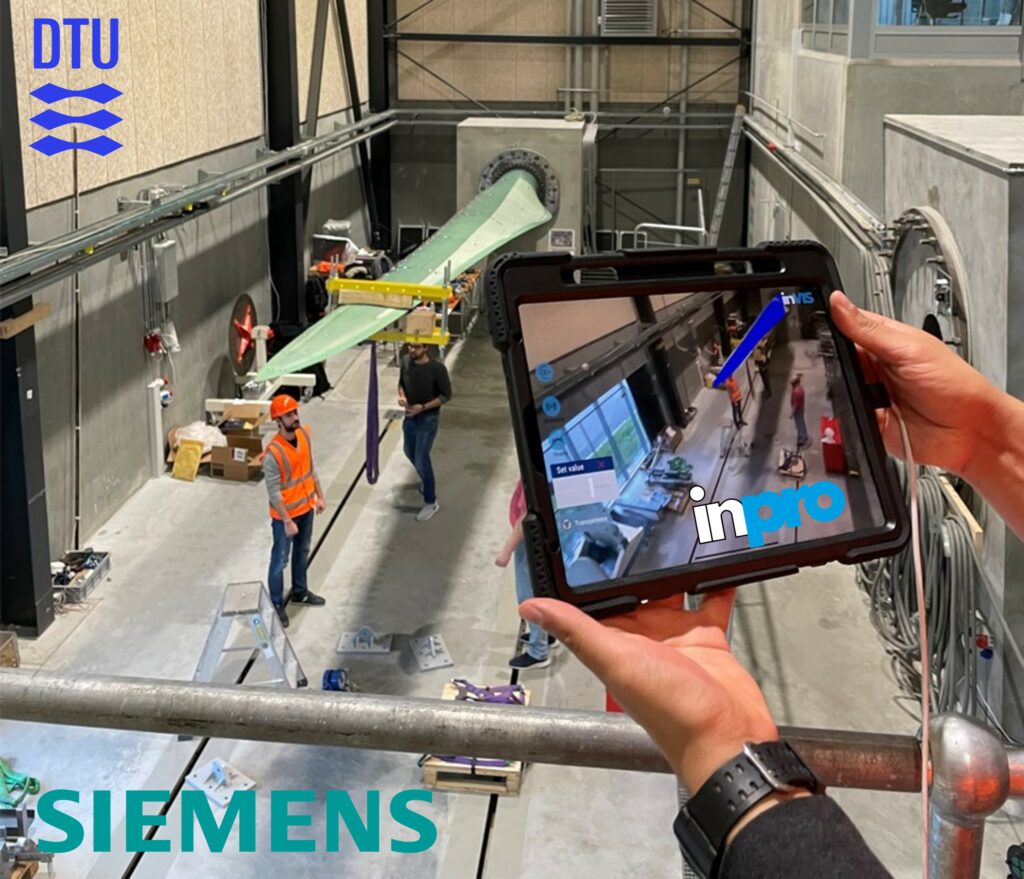
Company: ReliaBlade (Denmark)
Partners: CEKO Sensors (Denmark), FORCE Technology (Denmark), Siemens Industry Software (SISW) (Belgium), Technical University of Denmark (Denmark), Zebicon (Denmark)
Description: The wind turbine blade executable Digital Twin combines a reduced-order model with live sensor signal to assess structural performance in real-time. Physical and virtual sensors combined is key to perform Structural Health Monitoring. The 12.6m wind turbine blade is manufactured using a conventional vacuum infusion process at DTU BladeLab. Non-crimp UD and BIAX fibreglass fabrics, sandwich core material and root inserts are placed as dry layup in the molds. Subsequently, vacuum infusion processes are conducted for each of the parts using an epoxy resin system. After the shells and webs have been infused and fully cured, the two airfoil shells and shear webs are bonded together using epoxy adhesive before the blade is trimmed.
Key benefits:
• Live monitoring of blade deformations
• Live monitoring of loads and remaining life
• Predictive maintenance assessment
• Remote monitoring and health assessment
• Model error reduction
More information: www.reliablade.com
Category Equipment, Machinery & Heavy Industries
Automatic composites moulding system
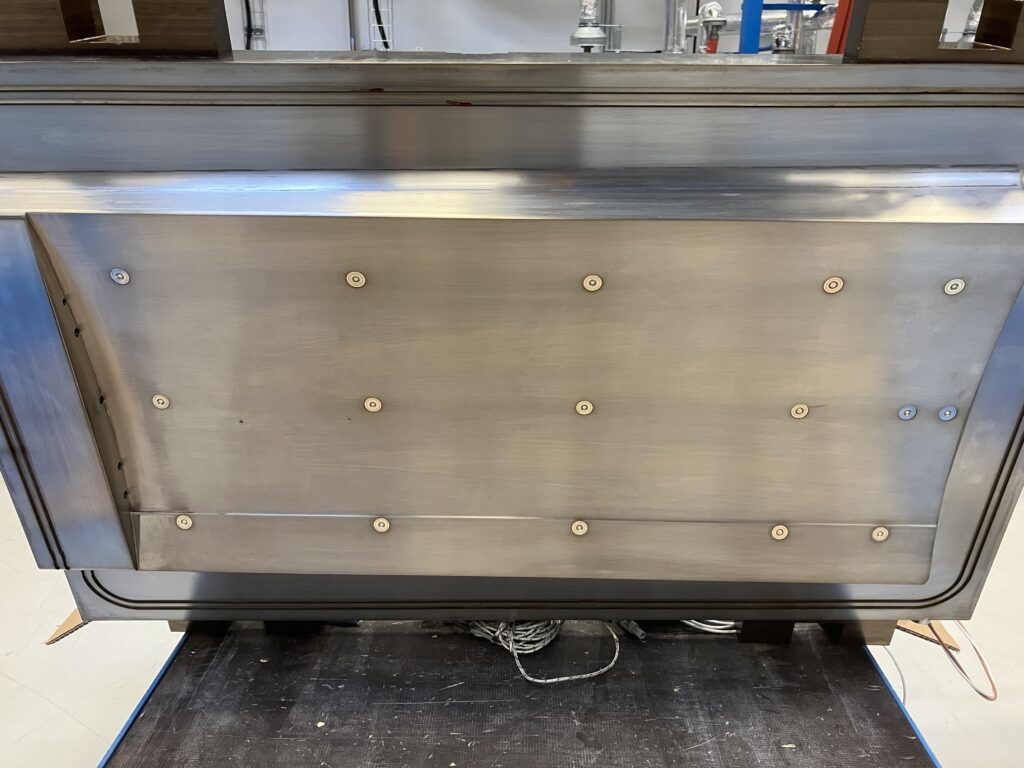
Company: Synthesites (Greece)
Partners: SAFRAN Composites (France), SAFRAN Tech (France)
Description: A fully sensorised intelligent mould, able to control the moulding process in an optimal and automated way. Intelligent sensors can follow accurately the resin flow, viscosity and the glass transition temperature and degree of cure. An intelligent automatic moulding system is presented by Synthesites, Safran Tech and Safran Composites for an industrial RTM aerospace application, comprising: durable sensors that work in direct contact with carbon-fibres, a proprietary calibration technology for the accurate estimation of the resin’s viscosity, degree of cure and Tg, inline cure sensors for the online resin viscosity in the pipelines and the Cure Simulator to simulate the curing only by the temperature. This technology can reduce the moulding time by at least 15%, ensuring part quality.
Key benefits:
• Online quality control
• Reduce injection time
• Reduce curing time
• Improve part quality
• Reduce scrap
More information: www.synthesites.com
First carbon chassis for large agriculture machine

Company: AgriLight – Research Group (Germany)
Partners: Leibniz University Hannover, Institute of Production Engineering and Machine Tools (Germany), MD Composites Technology GmbH (Germany), Maschinenfabrik Bernard KRONE GmbH & Co. KG (Germany), Clausthal University of Technology, Institute of Polymer Materials and Plastics Engineering (Germany)
Description: Novel, function-integrated monocoque chassis in lightweight thermoset carbon composites design for more sustainable agricultural machinery, manufactured using cost effective vacuum infusion. The innovation is a carbon chassis for the Krone Big X forage harvester. With a monocoque weight of around 300 kg, weight savings of over 500 kg are possible compared to the steel frame. The chassis is manufactured in open molds with vacuum infusion and curing in an oven. With the new design, the tanks are integrated into the closed chassis to further reduce weight and the risk of embers. Despite the weight savings, the chassis has a significantly higher torsional rigidity.
Key benefits:
• Reduction of fuel and CO2-Emission
• Simplified registration for public roads
• Lower fire risk due to closed surfaces
• More tank volume due to integration
• Higher torsional and bending rigidity
More information: hpcfk.de/agrilight
Maximum mass reduction of cutting tools
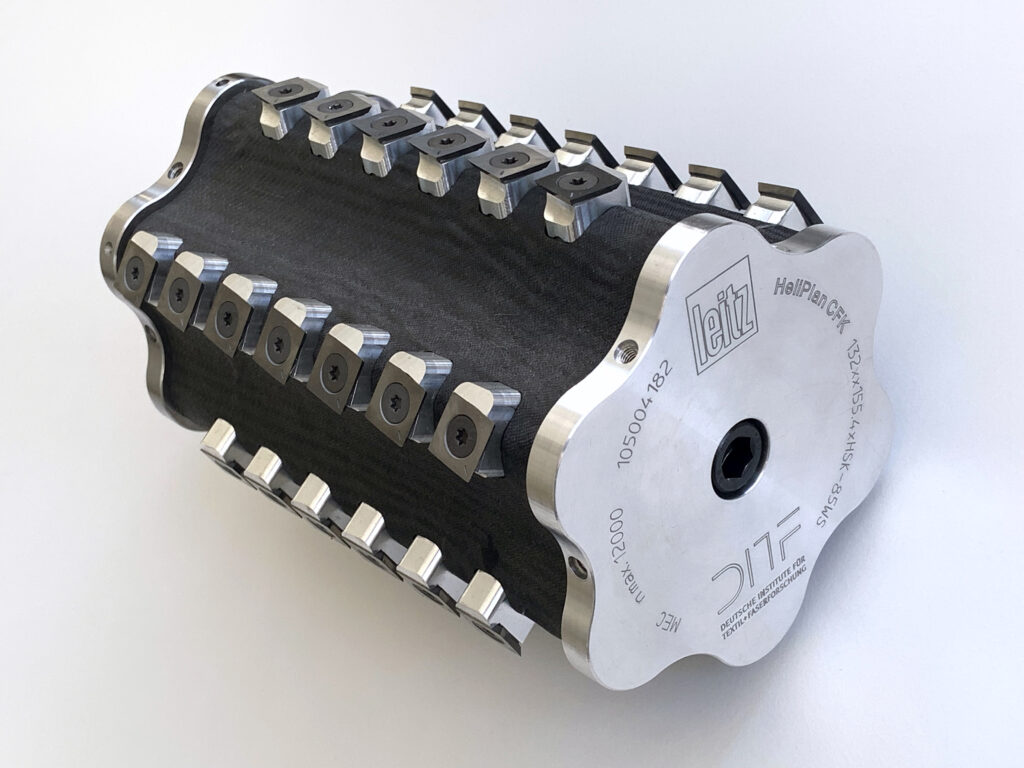
Company: Deutsche Institute für Textil- und Faserforschung Denkendorf (Germany)
Partner: Leitz GmbH & Co. KG (Germany)
Description: A new modular cutting tool for woodworking machine is developed exploiting the mechanical advantages of CFRP. More than 50 % weight reduction and an increase in working speed of over 50 % is achieved. Instead of replacing the metallic tool body with CFRP, new design principles were analyzed using numerical simulation. Following the principle of optimal load sharing, the virtual development resulted in a modular tool design, with triangular components that absorb the centrifugal forces and an outer shell that accommodates the bending and torsional loads. Load optimized orientation of carbon fibres leads to maximum stiffness and strength of the tool body. The final result features maximum weight reduction and increased productivity without compromising product quality.
Key benefits:
• Modular lightweight design with CFPR parts can replace standard cutting tools.
• New design exploits fibre strength and stiffness leading to rigid tools.
• Over 50% mass reduction and 50% higher speed and productivity possible.
• Scalability of design leads to a high application range.
• Usage with standard adapter and cutting knives, high processing accuracy.
More information: www.ditf.de
Category Maritime Transportation & Shipbuilding
Hydrogen chase boat for America’s Cup Team
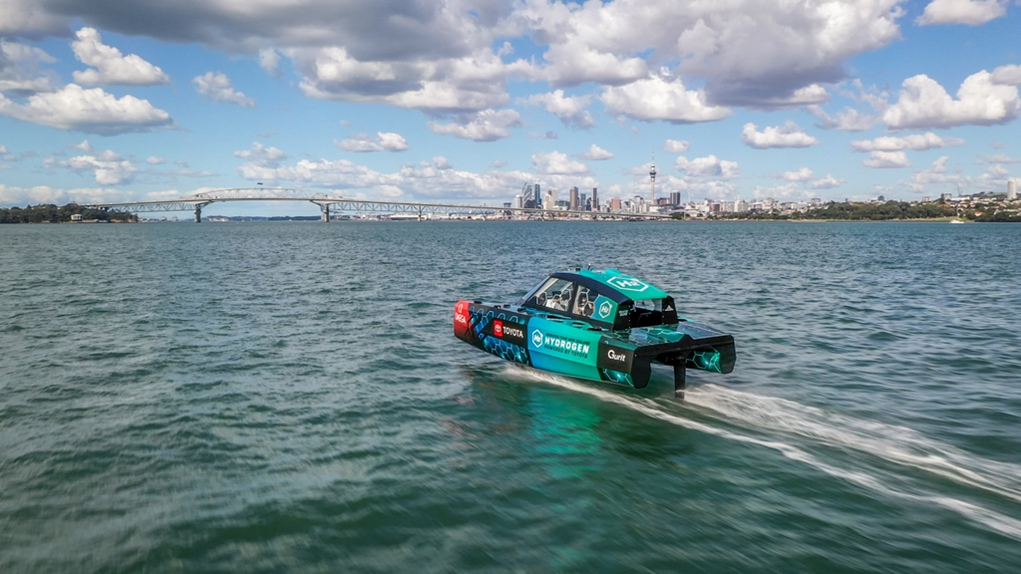
Company: Gurit (Switzerland)
Partners: McConaghy Boats (China), Team New Zealand Ltd (trading as Emirates Team New Zealand) (New Zealand)
Description: Advanced composite materials and structural engineering for lightweighting of zero-emission marine structures. Supporting partners through rapid prototyping and production engineering. ETNZ were the driving force behind introducing zero-emission vessels for the on-water support of the America’s Cup, and responsible for the detail design, naval architecture, foils, systems integration, and software development. Gurit’s engineers worked alongside them to develop an innovative lightweight composite structure to ensure the greatest flexibility in design and installation of the hydrogen fuel cell and supporting systems. With the prototype vessel successfully demonstrated, McConaghy Boats then produced the production version while making the technology available to the race committee and other teams.
Key benefits:
• Reliable lightweight composite structures during a rapid prototype process
• Structure with large openings and minimum weight allows for future access
• Reduced structural weight helps offset hydrogen electrical component weight
• Demonstrates the possibilities for wider adoption of zero-emission technology
More information: www.gurit.com
OceanWings®
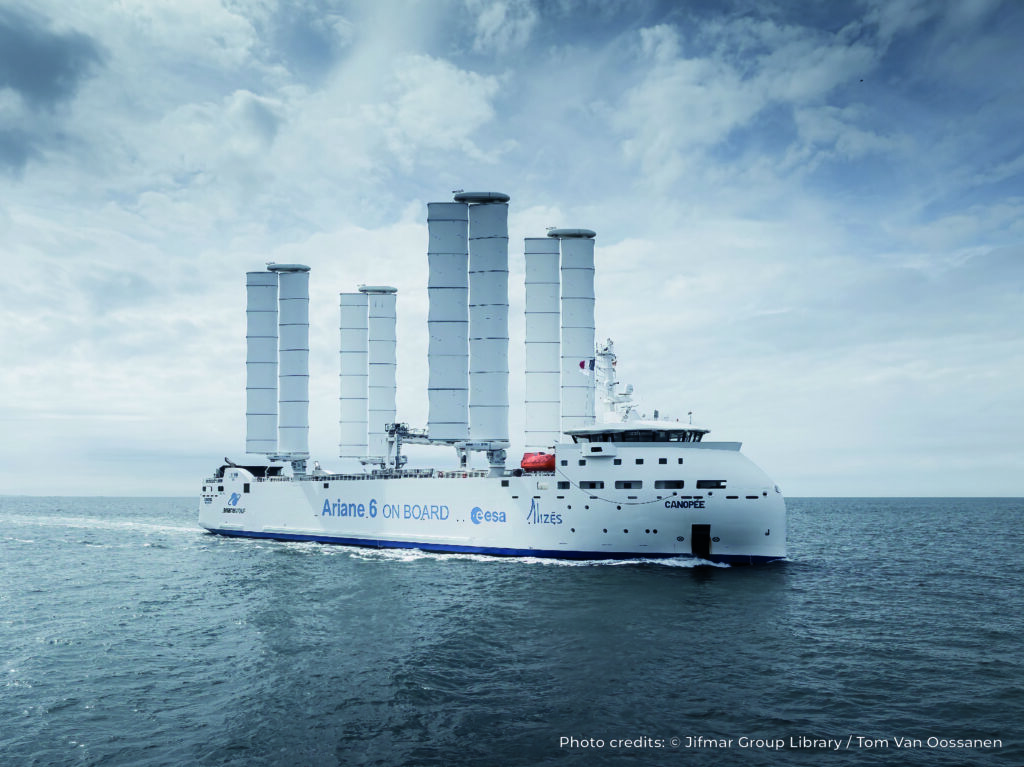
Company: AYRO (France)
Partners: Alizés (France), Jifmar Offshore Services (France), Zéphyr et Borée (France), Neptune Marine (Pays-Bas), VPLP Design (France), ArianeGroup (France)
Description: OceanWings® is a patented, automated, self-raising and lowering vertical wingsail system that enables newbuild or existing ships to reduce their fuel consumption and resulting carbon footprint by up to 50%. The challenges of our technology include the wing’s ability to withstand winds of up to 100 knots, while ensuring the proper functioning of its operations: automatic orientation in relation to the wind, adjustable camber, reefable and furlable. Structure is therefore essential to meet these challenges. At AYRO, we have chosen to use composite materials to a large extent in the construction of our wingsails, for their high mechanical strength and lightweight.
Key benefits
• Up to 50% of fuel savings
• Automated and passive system
• Dimensioned for harsh sea environmental conditions
• Reefable and furlable system
• Adapted to new-build and retrofitted ships
More information: www.ayro.fr
Tool-less composite builds by 3D core kit
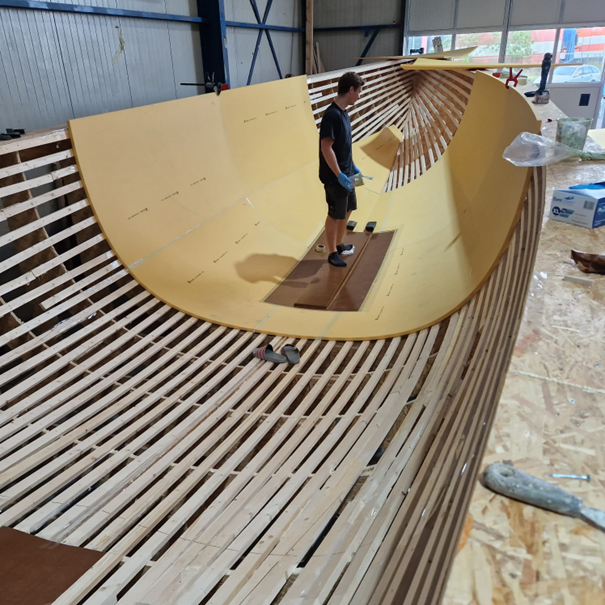
Company: Paul Dijkstra Composites (Netherlands)
Partners: Curve Works (Netherlands)
Description: A groundbreaking sailing yacht is built using innovative 3D Core Kits, eliminating traditional mould and tooling waste. A wooden jig is used to assemble and bond the thermoformed foam core, serving as the foundation for laminating the inner and outer carbon structure. Curve Works’s 3D Core Kits are kits of thermoformed structural foam core, formed on adaptive moulds. Paul Dijkstra Composites ingeniously utilised the 3D Core Kit as both mould and substructure for a new 46ft yacht. A simple wooden frame acted as an assembly jig for the Kit, which was bonded together to a vacuum-tight surface and overlaminated with carbon skins. This approach bypasses the plug-mould process resulting in shorter build times, minimal waste, and the first hull also served as the production-ready mould.
Key benefits:
• No plug/mould required – cost-efficient build process
• Faster build time
• 90% waste reduction from tooling
• Less factory space required – no need to store a mould
More information: www.pd-composites.nl
Category Renewable Energies
Blade circularity solution

Company: Vestas Wind Systems A/S (Denmark)
Partners: Vestas (Denmark), Olin (Germany), Aarhus University (Denmark), Danish Technological Institute (Denmark), Stena Recycling (Denmark and Sweden)
Description: CETEC’s Blade Circularity Solution renders epoxy-based turbine blades circular without altering the material’s design or composition. It employs a chemical process breaking down epoxy resin into virgin-grade materials, establishing a circular economy for blade manufacturing.
Our innovation redefines circularity for epoxy-based turbine blades. It precisely separates glass, carbon fibres, core material, metal components, and resin for dedicated recycling, optimizing reuse and enhancing circular value chains. Featuring cutting-edge chemcycling, it breaks down epoxy resin into chemical monomers, ensuring recycled materials achieve virgin-grade properties. Emphasizing sustainability, it operates efficiently using non-toxic, standardized chemicals with minimal energy input. Tailored for conventional epoxy-based turbine blades, it addresses an industry gap, supported by waste handlers’ interest and ongoing industrial scaling, promising swift lab-to-large-scale implementation.
Key benefits:
• Circularity for epoxy-based composite material
• Recyclability without modifying design
• New sustainable raw material source
• Strengthening the wind industry’s sustainability proposition
• Immediate scalability and mature recycling value streams
More information: www.vestas.com
Enhancing circularity in renewable energy

Company: Acciona Construction S.A (Spain)
Partner: Acciona Energia S.A (Spain)
Description: Our innovation on one side eliminates landfilling of End-of-Service Wind Turbine Blades (EoSWTB) and, on the other, substitute currently used Galvanized Iron (GI) profiles with Composite profiles for installing PV panels in Solar Energy farms. Recycling EoSWTB and using recyclates obtained to manufacture Composites profiles for installing Solar PV panels.
Several technical challenges have been overcome to achieve this:
• Develop an industrial, cost-competitive and automatic process for shredding EoSWTB.
• Ensure production of moisture free fine particle size recyclate
• Develop resin-mix (resin-recyclate) formulation
• Develop fibre impregnation and resin-mix injection system
• Develop die for rapid profile manufacturing with minimum process waste generation
• Ensure quick and easy installation of Composite profile with fewer workers as compared to GI profile installation.
Key benefits:
• Recycling EoSWTB leads to “Zero” landfilling
• Converting a waste into valuable resource
• Substitute GI profiles prone to corrosion with high durability corrosion resistant Composites profiles.
• Reducing CO2 emissions: CaCO3 extraction and GI production processes are energy intensive as compared to recycling EoSWTB and manufacturing of Composite profiles.
• Composites profiles are easy & quick to install with fewer workers as compared to conventional GI profile.
More information: www.acciona.com
Wrapped composite joints for offshore renewables
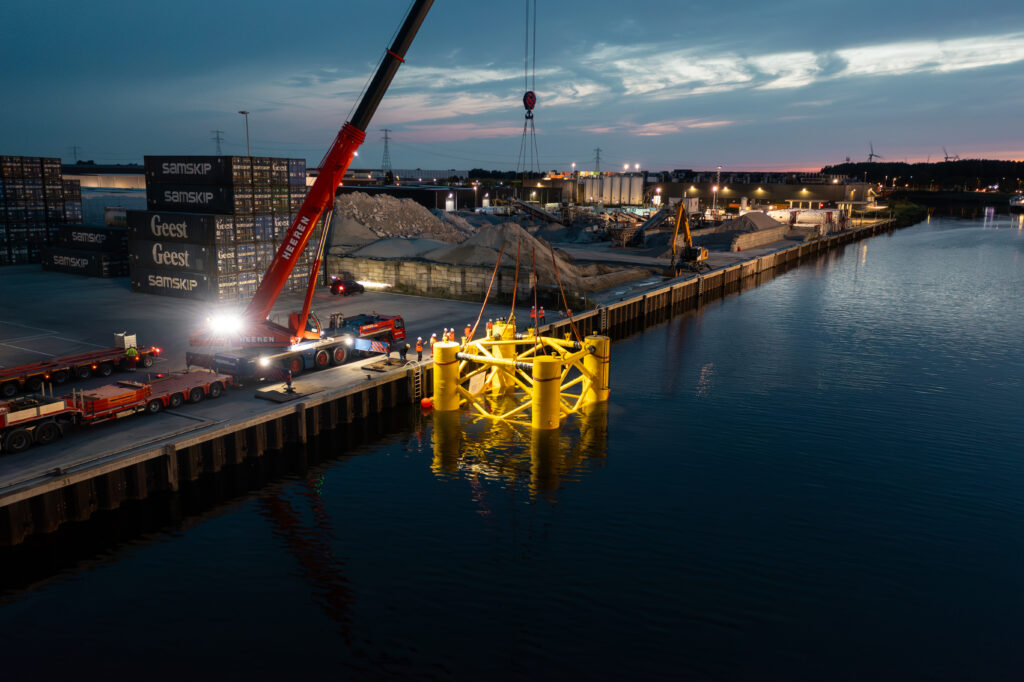
Company: Tree Composites (Netherlands)
Partners: Delft University of Technology (TU Delft) (Netherlands), Versteden B.V. (Netherlands)
Description: Wrapped composite joints replace complex welding in lattice structures and provide superior load transfer. Ideal for offshore wind foundations, they ensure faster and cost-effective fabrication and reduce steel consumption contributing to a lower carbon footprint. The wrapped composite joint connects steel members by adding composite material exactly where it is required. The breakthrough of this patented technology is that all loads are transferred through the dedicated composite wrap and not through the limited surface of a weld. This reduces stress concentration, leading to lighter, cost-effective offshore renewable structures (like jackets, floating foundations) with superior lifetimes. Next to the application in steel structures, the composite wrap technology enables new markets such as full composite offshore structures.
Key benefits:
• Up to 60% reduction of steel used in jacket foundations
• 200% increased yard production capacity
• Up to 50% reduction of CO2 for jacket foundations
• Superior fatigue lifetime of up to 10 times compared to welding
• Wide applicability enabling full composite structures
More information: www.treecomposites.com
Category Sports, Leisure & Recreation
Capital SL full-carbon wheelset
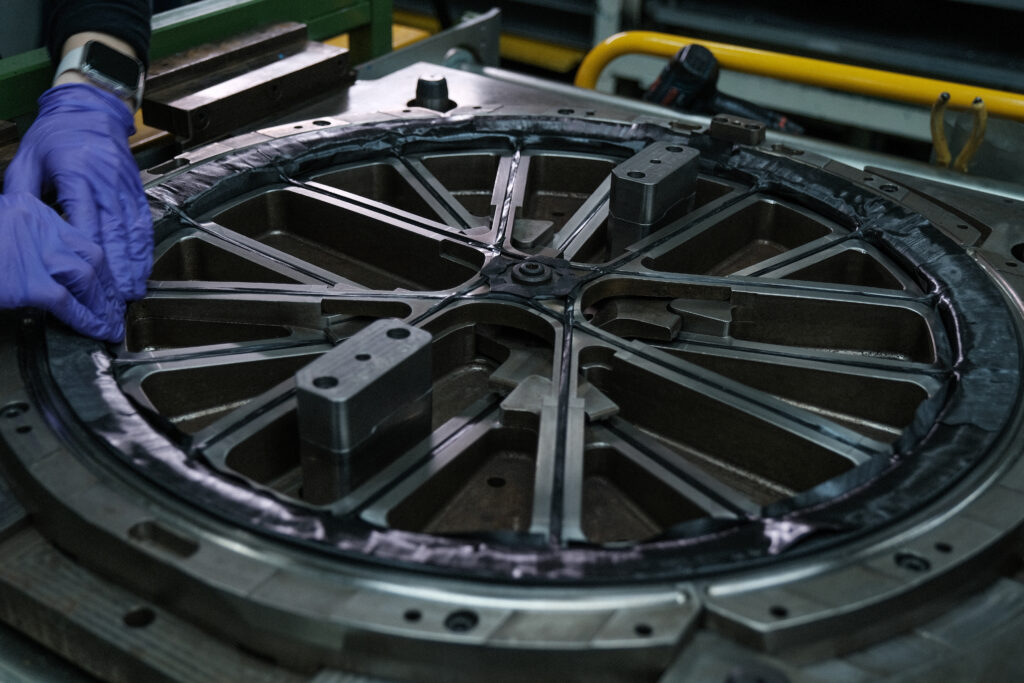
Company: Radiate Engineering & Design AG (Switzerland)
Partner: Scott Sports SA (Switzerland)
Description: The Capital SL wheelset represents a breakthrough in lightweight, aerodynamic design. It fully exploits carbon fibre through a patented manufacturing method and a simulation-based engineering approach. The Capital SL wheelset embodies advancements in composite and bicycle technology alike. It features a Monocoque Wheel System for integrated rim-spoke construction, enhancing structural integrity. Unique carbon fibre spokes, part of the monocoque structure, eliminate traditional interfaces, improving load transfer and reducing stress. The development leveraged simulation technologies like FEM, optimization algorithms, and real-world testing, optimizing the wheel’s stiffness, weight, and safety. Additionally, aerodynamic efficiency was a focus. The result: a superior wheelset for competitive cyclists, thanks to innovative materials, manufacturing techniques, and design optimizations.
Key benefits:
• Lowest system weight in class
• 7% drag reduction
• 20% less rotational inertia
• Best in class aerodynamic performance
• Patented manufacturing process
More information: www.radiate.ch
Green snowboard with A.L.D.-tech.®

Company: silbaerg GmbH
Partners: Sächsisches Textilforschungsinstitut e.V. (STFI) (Germany), bto-epoxy GmbH (Austria), Circular MTC e.V. (Germany), SachsenLeinen GmbH (Germany)
Description: Snowboard with patented anisotropic coupling effect (A.L.D.-tech.®) made out of hemp and recycled carbon fibres with bio-based epoxy resin. The innovation is the application of the Dry-Fibre-Placement (DFP) for the production of hybrid hemp and recycled carbon fibre (rCF) snowboard preforms. The process was currently only used to process continuous virgin carbon fibres. Thanks to the excellent material properties of the hemp tape and the directional rCF nonwovens, both materials can be processed automatically using DFP. This saves 75% of cutting waste of the hemp fibres and uses the cutting waste of our carbon fibre snowboards to save costs and reduces the CO2 footprint.
Key benefits:
• Green snowboard based on hemp fibres and recycled carbon nonwoven
• Using of dry-fibre-placement for waste-reduced production
• Unidirectional or high-orientated semi-finished textiles for perfect properties circular economy for high-performance snowboards made of virgin carbon fibre
• Green economy for the green snowboard by using bio-based epoxy
More information: www.silbaerg.com
Helicoid / Tacks ice hockey stick blade

Company: Helicoid Industries (USA)
Partner: CCM (Canada)
Description: The Helicoid™ architecture is providing unprecedented performance and longevity for ice hockey sticks’ blade under repeated high-impacts. The structure controls the crack growth inside of composite and keep superior performance over a longer period of time. The Helicoid™ technology consists of layers of aligned fibres which are stacked up with a progressive change in fibre orientation in the same direction which leads to a helicoidal distribution of fibre orientations. Helicoid’s™ is smoothing the change in fibre orientation with inter-ply angles <30°, reduces interlaminar stresses, and improves toughness and durability while utilizing the same materials and weight. The laminate keeps the same directional properties to meet the specific in-plane stiffness and strength requirements and not affect the playability of the product.
Key benefits:
• Increased impact strength
• Increased durability and performance over time
• Use the same conventional materials
• Use the same production process
• Quick deployment and acceptance
More information: www.helicoidind.com
JEC World 2024
March 5-7 – Paris Nord Villepinte
The awards ceremony will take place in Paris on February 8th, 2024.


